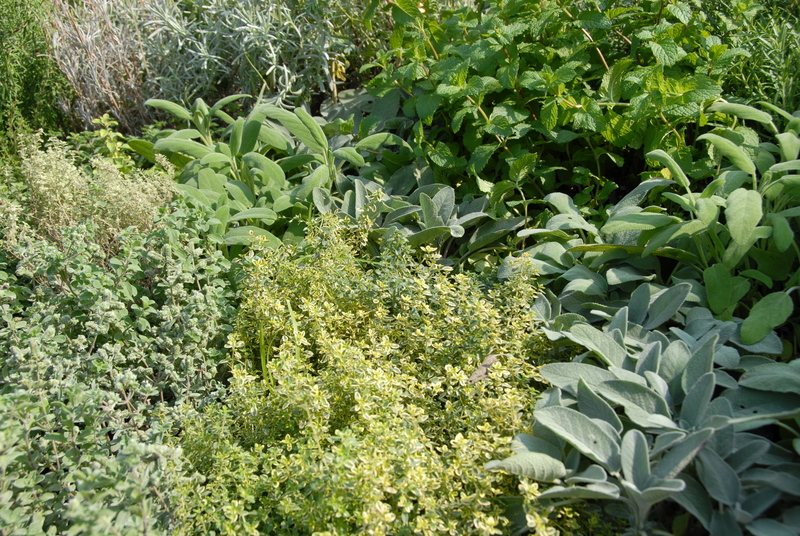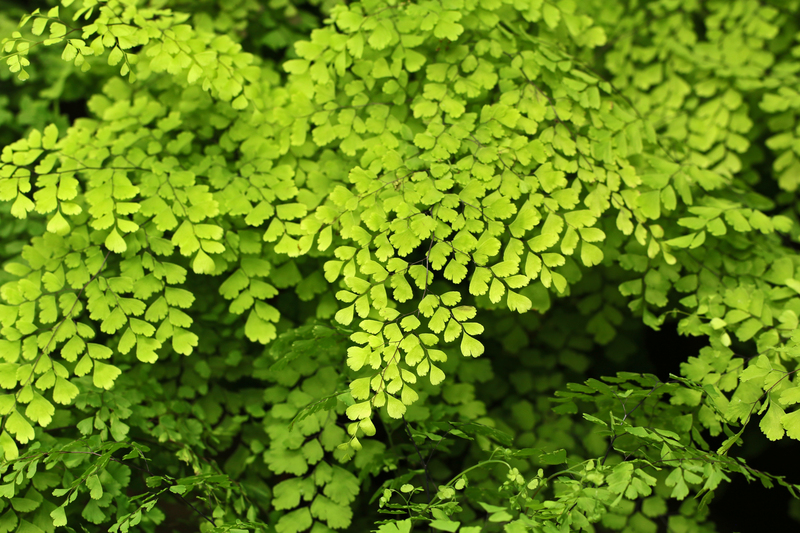Insider tips for a harmonious garden with dogs
Posted on 27/05/2025
Insider Tips for a Harmonious Garden with Dogs
Sharing your outdoor space with a beloved canine brings immense joy, yet it also presents a unique set of challenges for garden enthusiasts. If you dream of a beautiful, thriving garden that coexists happily with your dog, you're in the right place. This comprehensive guide offers insider tips for a harmonious garden with dogs, covering layout design, dog-friendly plants, training strategies, and maintenance advice. Discover how to create a tranquil, safe, and lush garden that works for both you and your furry friend.

Designing the Perfect Dog-Friendly Garden
Understanding Your Dog's Needs
Every successful and harmonious dog garden begins with understanding your dog's inherent instincts and daily habits. Does your dog love digging? Is he a notorious escape artist? By factoring in their behavior, you can design a garden space that meets both your needs.
- Exercise and Space: Ensure there's ample space for your dog to run, play, and stretch their legs. Circular or looping pathways satisfy their curiosity and energy.
- Shade and Shelter: Dogs love lounging outdoors, but they need escape from direct sun and rain. Incorporate trees, large shrubs, or purpose-built shelters.
- Water Access: Make sure your dog has access to fresh water, especially during warm months.
- Safety: Secure fencing is non-negotiable for any harmonious garden with dogs. Regularly check for holes or weak points to prevent escape.
Creating Pathways and Boundaries
Paths not only provide structure to your landscape but also cater to the patrol habits of many dogs. Insider tip: Border your garden beds with stones or low fences to discourage trampling. Plus, by allocating specific areas for your dog to roam freely, you protect your prized flowers and vegetables.
- Hardscaping: Use dog-friendly materials like pea gravel, flagstone, or bark mulch, which are gentle on paws.
- Invisible Boundaries: Train your dog to recognize visual boundaries, such as differently textured ground, to keep them away from sensitive areas.
- Raised Beds: Elevate flower and vegetable patches to deter digging and trampling.
Choosing the Right Plants for a Harmonious Garden with Dogs
Dog-Safe Plant Choices
To achieve harmony, always prioritize non-toxic varieties. Many common garden plants are surprisingly dangerous for dogs, so select wisely:
- Safe picks: Marigolds, sunflowers, snapdragons, camellia, thyme, rosemary, and fuchsias
- Grasses: Ornamental grasses like blue fescue or carex look lovely and stand up to dog traffic.
- Fruit and Veg: Carrots, blueberries, pumpkin, and green beans are healthy and safe for dogs--plus, they're delicious!
Toxic Plants to Avoid
Even a harmonious garden with dogs can turn dangerous if toxic plants are present. Always double-check before planting:
- Lilies
- Azaleas and rhododendrons
- Daffodils
- Ivy
- Oleander
- Sago palm
- Tulips
Check the ASPCA Poisonous Plants Database for a comprehensive list.
Planting Strategies for Durability
Opt for tough, fast-growing plants. Ground covers like clover and creeping thyme withstand canine foot traffic, while dense shrubs create natural barriers. Pro Tip: Plant in drifts or clusters for easy replanting as needed.
Essential Dog Training for Garden Harmony
Basic Training Commands
Even the most thoughtfully designed garden can only do so much without a bit of training. Teach your dog these commands:
- "Leave it": Keeps dogs away from forbidden plants or areas.
- "Stay" and "Come": Maintains control and ensures safety.
- Boundary training: Use treats and praise to reinforce respectful distance from certain beds or features.
Consistency is key--repeat these lessons regularly in the garden to instill good habits.
Designated Potty Areas
Insider tip: Create a dedicated spot for bathroom breaks in a discreet area, using sand, gravel, or artificial turf. Consistently guide your dog there to keep the rest of your yard clean and healthy.
Redirecting Unwanted Behaviors
- Digging: If your dog loves to dig, set up a "dig pit" filled with soft soil or sand where they can indulge guilt-free. Hide toys for added fun.
- Chewing: Provide sturdy toys or branches to satisfy the urge, and remove access to tempting but harmful plants or mulch.
- Mouthing plants: Bitter-tasting, pet-safe sprays can deter chewing.
Maintenance and Upkeep for Lasting Harmony
Proactive Clean-Up
Pick up waste promptly and rinse any urine spots. This not only keeps your garden hygienic, it also prevents dead patches on your lawn.
Repairing Damage
- Reseed or patch bare spots with hardy grass varieties.
- Use stepping stones for high-traffic areas to reduce wear and tear.
- Replace mulch regularly, choosing dog-safe types (avoid cocoa mulch, which is toxic).
Pest and Weed Management
Many traditional chemicals and pesticides are hazardous to dogs. Choose organic, natural alternatives such as:
- Neem oil
- Beneficial nematodes
- Corn gluten for weed prevention
Physical barriers and regular hand weeding are also effective for a truly dog-friendly garden.
Seasonal Considerations
- Spring: Replant winter losses and check fences for damage.
- Summer: Provide extra water bowls and shade.
- Fall: Mulch for warmth and plant new dog-safe shrubs.
- Winter: Keep paths shoveled and monitor for toxic ice melt products.
Creative Ideas for a Dog-Loving Garden
Integrating Fun and Function
- Agility Equipment: Incorporate ramps, tunnels, or low hurdles for active breeds.
- Interactive Features: Splash fountains or shallow streams encourage cooling off and play.
- Sensory Gardens: Plant aromatic, dog-safe herbs (like basil and mint) to stimulate your pup's sense of smell.
Garden Decor and Accessories
Don't forget about comfortable spots for your four-legged companion:
- Outdoor dog beds: Place in shady, quiet corners.
- Dog houses: Blend seamlessly with the landscape for both function and aesthetics.
- Toy stations: Keep a basket of chew and fetch toys outdoors to occupy your dog, minimizing interest in your flower beds.
Sustainable Gardening with Dogs
Eco-friendly Practices
- Composting: Avoid including dog waste in compost meant for edible plants, but use safe green waste to fertilize ornamentals.
- Water conservation: Install drip irrigation for maximum efficiency and to keep pathways dry and mud-free for dogs.
- Native planting: Choose local species that require less maintenance and water--many are more resistant to both canine and insect pests.
Building Wildlife Habitats
With careful planning, it's possible to maintain a pet-friendly space that also invites pollinators and birds. Use fencing or netting around delicate habitats and choose multi-purpose plants like lavender or sunflowers.

Troubleshooting Common Dog-Garden Conflicts
Digging and Trampling
- Block beds with low fences or inexpensively with driftwood.
- Encourage digging in approved zones with buried toys.
- Reinforce training and reward gentle paw behavior.
Yellow Spots on Lawns
- Encourage hydration--dillute urine by teaching your dog to drink water while outdoors.
- Quickly hose down urinated spots to prevent burning.
- Reseed with hard-wearing and urine-tolerant grass varieties.
Plant and Mulch Chewing
- Avoid all cocoa mulch and check new mulch products for dog safety.
- Apply deterrents, and focus on obsessive chewers with additional chew toys and enrichment.
Conclusion: Cultivating a Harmonious Garden with Dogs
A harmonious garden with dogs is absolutely possible, blending playfulness and serenity in your outdoor sanctuary. By tailoring the landscape to your companion's habits, selecting non-toxic plants, using durable materials, and consistently communicating boundaries, you can enjoy a thriving, beautiful garden that is as safe as it is stunning.
With these insider tips and a little patience, your green space will offer joy and comfort to every creature who calls it home--including your favorite furry friend. Happy gardening!
Quick Reference: Must-Do Tips At a Glance
- Prioritize pet-safe plants and organic care methods.
- Design spaces for both play and relaxation.
- Reinforce boundaries and proper behaviors with training and routine.
- Maintain fence security and garden hygiene.
- Stay vigilant for toxic hazards and seasonal changes.
Start planning your dog-friendly garden today and relish the rewards of an outdoor haven that both you and your dog will cherish year-round!



